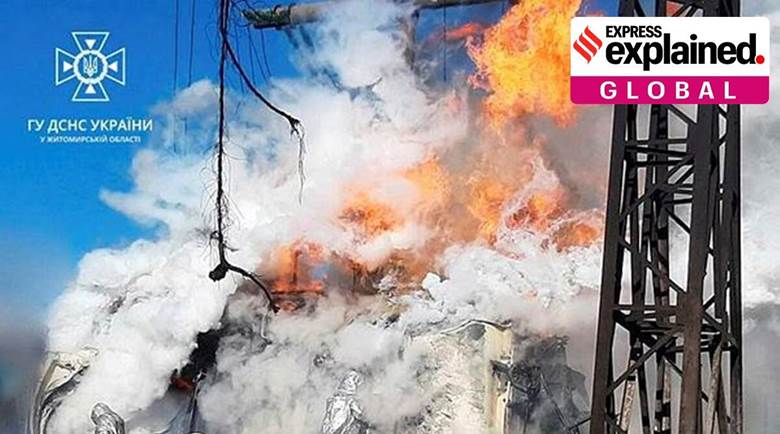Description

Copyright infringement not intended
Context: German Chancellor Olaf Scholz said Russian President Vladimir Putin was using “energy and hunger” as weapons but his “scorched earth tactics” would not help Russia win the war over Ukraine
Details:
What are scorched earth tactics?
- Scorched earth tactics form part of a military strategy which seeks to destroy anything that could be of use to the enemy, including energy supplies, bridges, provision stores, agricultural fields, road and railway links, etc.
- The destruction could be carried out by the enemy, or by the retreating army of a country which does not want invaders to use its resources.
- Harming civilians as part of this strategy has been banned under the 1977 Geneva Convention.
- According to the Oxford Reference, the “term was first used in English in 1937 in a report of the Sino-Japanese conflict, and is apparently a translation of Chinese jiāotŭ.”
- The strategy seeks to deplete the enemy’s resources to sustain warfare, and also break their morale by inflicting heavy hardships on combatants and non-combatants alike.
- Russia has rained missiles on Ukraine’s cities, destroying civilian infrastructure, including power and water supply lines.
- Ukrainian cities are “highly dependent on reliable electricity supplies and centralised heating. Any disruption to these during winter can cause pipes to burst and render high-rises uninhabitable.”

Some past instances:
- Scorched earth policy has been part of warfare since ancient times, with the nomad Scythians using the tactics in their war against the Persian Achaemenid Empire led by King Darius the Great (who ruled 522 BCE to 486 BCE).
- The nomadic herders Scythians would hide in the steppes after destroying food supplies and poisoning wells.
- A notable example of the use of this tactic came during the American civil war in 1864, when Union General William Tecumseh Sherman and his soldiers burnt everything in sight as they marched through Confederate areas.
- The campaign, known as the March to the Sea, is estimated to have cost the South close to $100 million. Sherman’s men pillaged farms, destroyed railway tracks and factories, set fire to cotton crops, and even burnt land deeds so that plantation owners would not be able to prove ownership.
- The campaign played a major role in breaking the will of the Confederacy and hastening the end of the war.
- Russia itself has used scorched-earth tactics before, including in the World Wars. In 1915, the Imperial Russian Army, when retreating from the Imperial German Army, destroyed anything that could serve the invaders for more than 600 miles, including crops, railway lines, and dwellings.
- During the Second World War, in 1941, the Russian army again destroyed telegraph networks and electrical and industrial resources when invaded by Germany.
In India:
- In India, the armies of Maratha leader Chhatrapati Shivaji were known for their scorched earth tactics.
- Some historians have said that while the Maratha leaders looted and burnt enemy towns, they were under orders to not harm civilians or desecrate religious sites.
https://indianexpress.com/article/explained/explained-global/german-chancellor-says-russia-using-scorched-earth-tactics-what-is-this-strategy-8221461/












